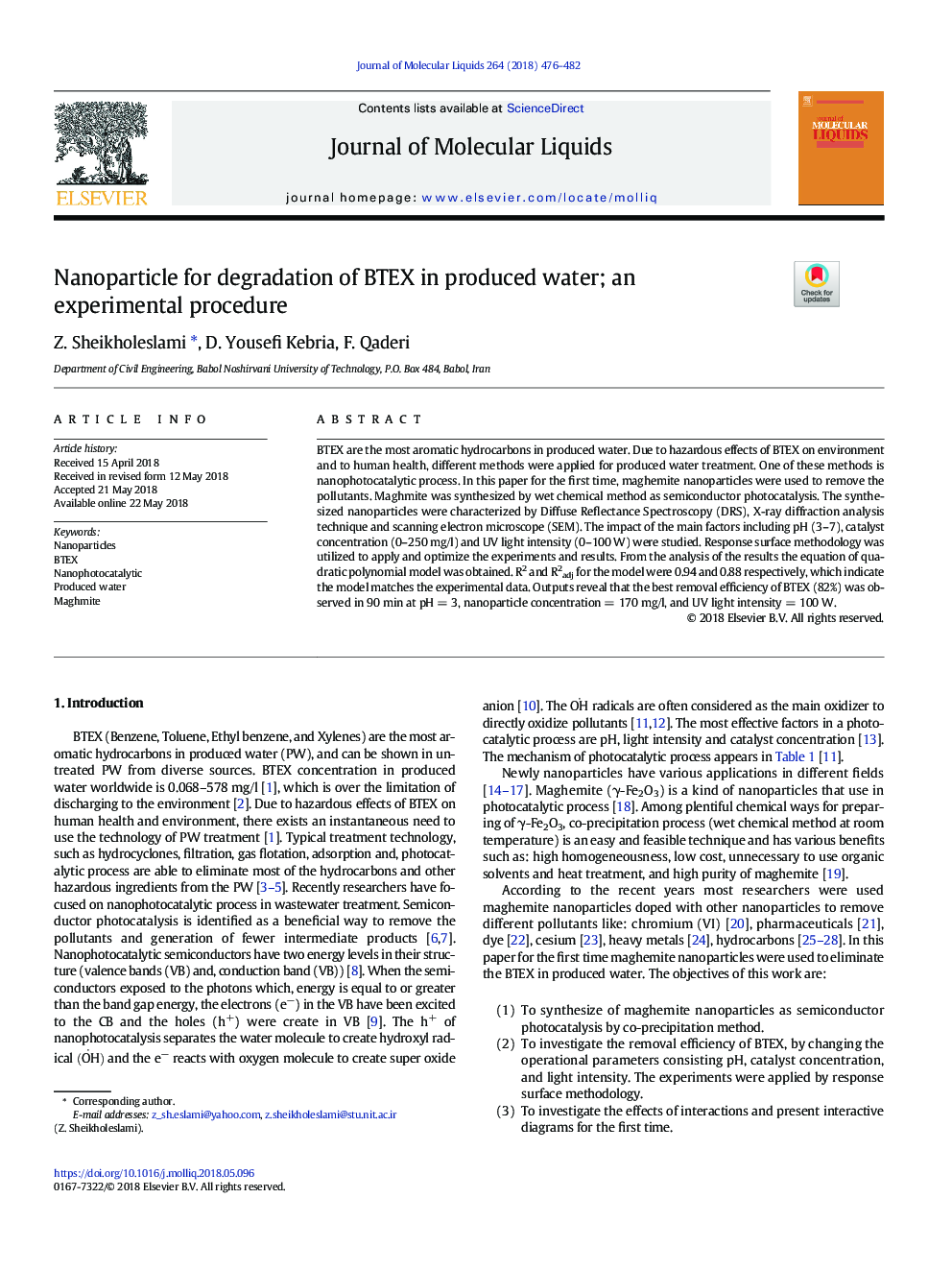| Article ID | Journal | Published Year | Pages | File Type |
|---|---|---|---|---|
| 7842212 | Journal of Molecular Liquids | 2018 | 7 Pages |
Abstract
BTEX are the most aromatic hydrocarbons in produced water. Due to hazardous effects of BTEX on environment and to human health, different methods were applied for produced water treatment. One of these methods is nanophotocatalytic process. In this paper for the first time, maghemite nanoparticles were used to remove the pollutants. Maghmite was synthesized by wet chemical method as semiconductor photocatalysis. The synthesized nanoparticles were characterized by Diffuse Reflectance Spectroscopy (DRS), X-ray diffraction analysis technique and scanning electron microscope (SEM). The impact of the main factors including pH (3-7), catalyst concentration (0-250â¯mg/l) and UV light intensity (0-100â¯W) were studied. Response surface methodology was utilized to apply and optimize the experiments and results. From the analysis of the results the equation of quadratic polynomial model was obtained. R2 and R2adj for the model were 0.94 and 0.88 respectively, which indicate the model matches the experimental data. Outputs reveal that the best removal efficiency of BTEX (82%) was observed in 90â¯min at pHâ¯=â¯3, nanoparticle concentrationâ¯=â¯170â¯mg/l, and UV light intensityâ¯=â¯100â¯W.
Keywords
Related Topics
Physical Sciences and Engineering
Chemistry
Physical and Theoretical Chemistry
Authors
Z. Sheikholeslami, D. Yousefi Kebria, F. Qaderi,
